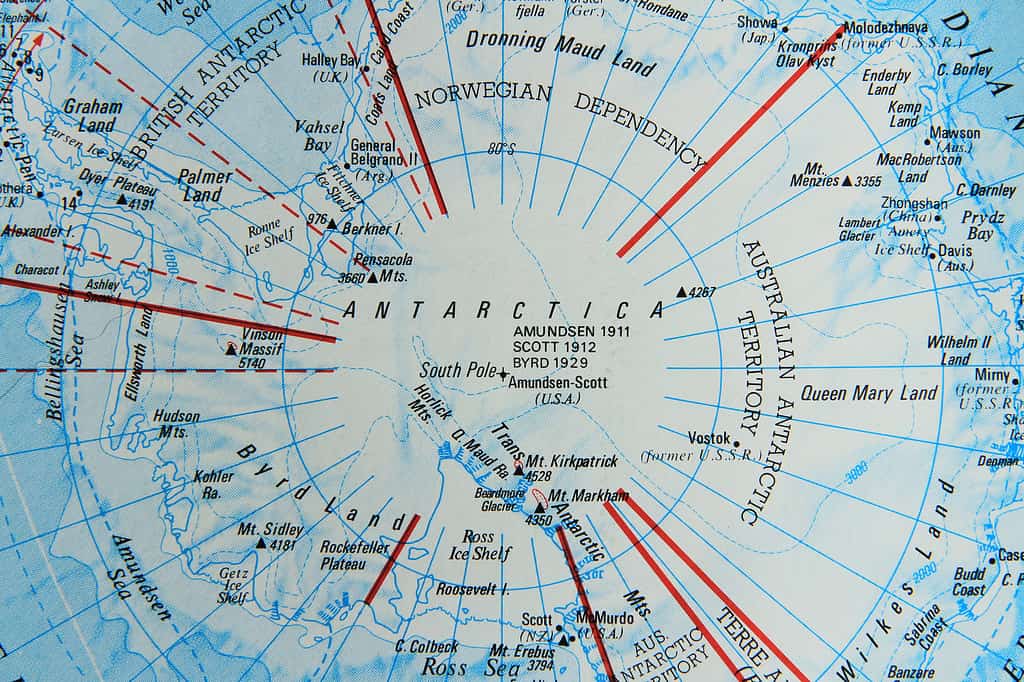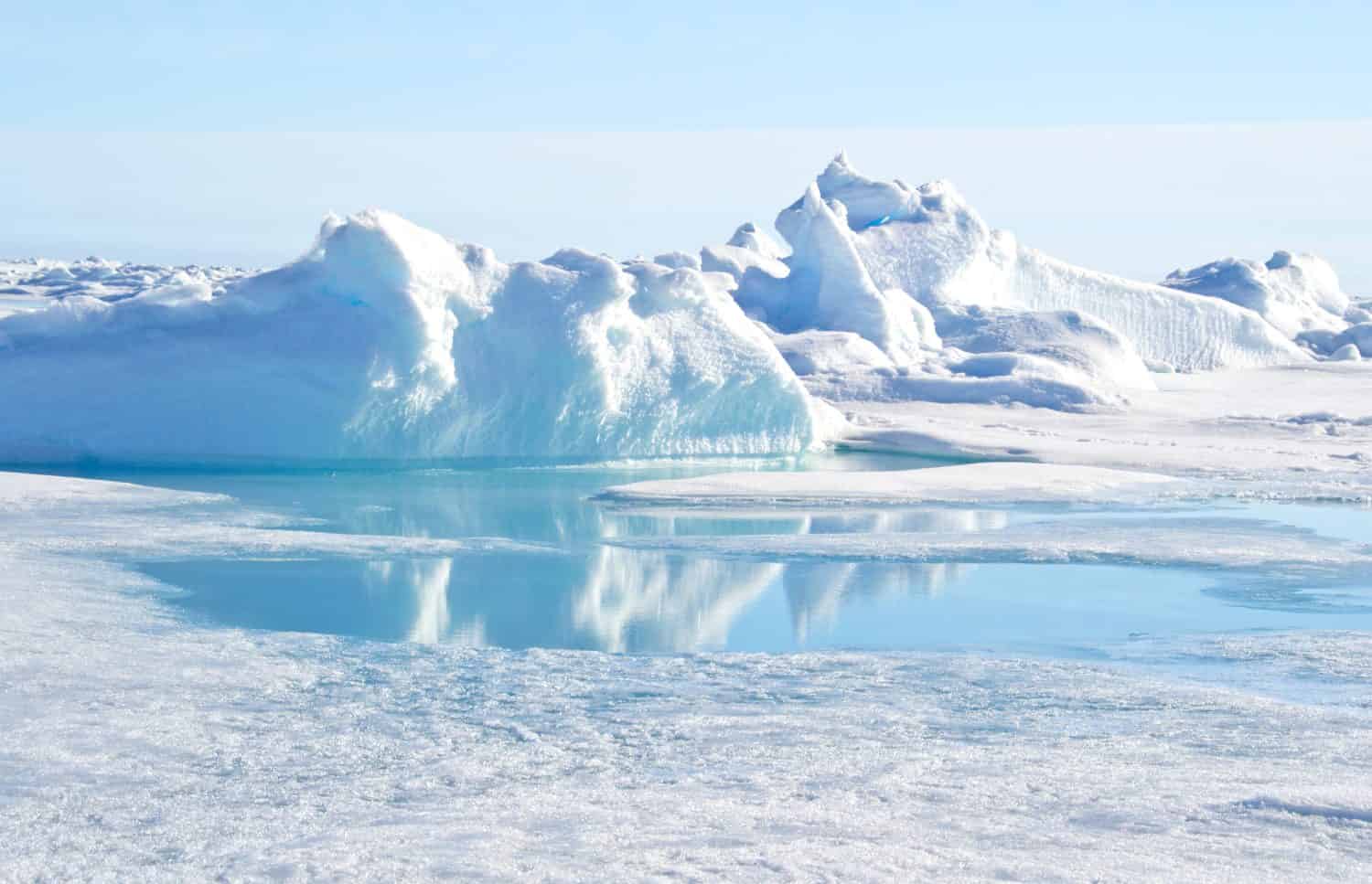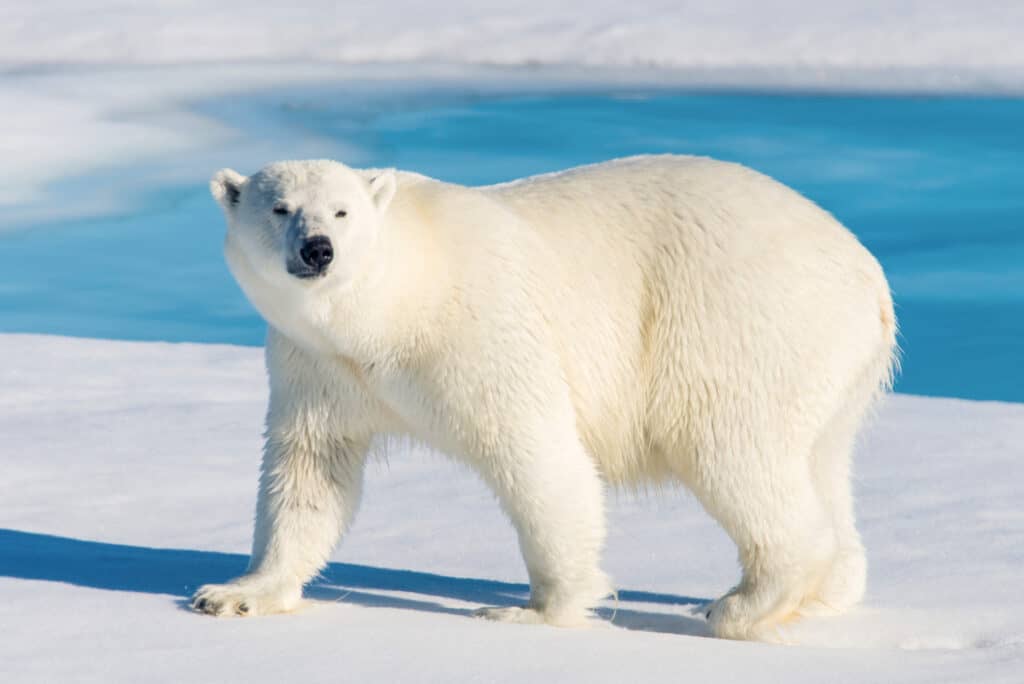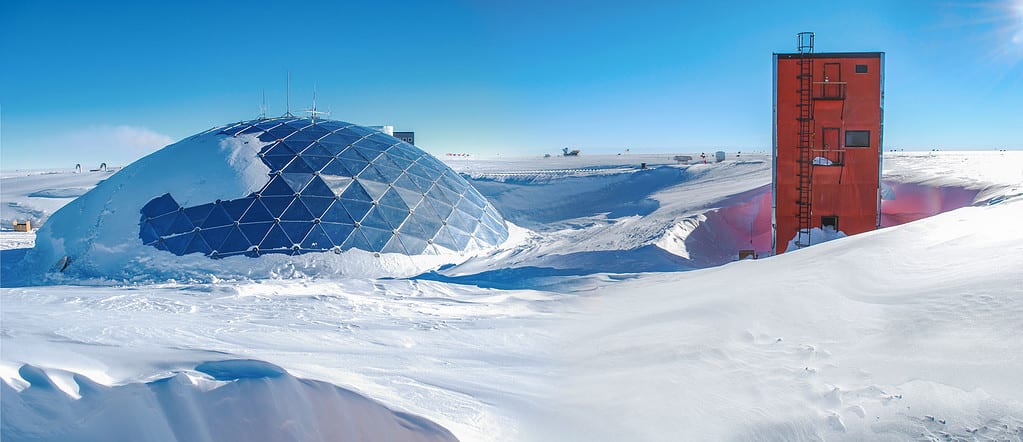The North Pole and the South Pole are located at the extremes of the Earth and are the coldest places in the world. Both are incredibly important places as they help to maintain the climate across the whole world. Additionally, the Antarctic region at the South Pole is responsible for around 70% of the world’s freshwater, while around 20% of it is in the North Pole’s Arctic region. However, these aren’t the only differences between the two, so keep reading to discover everything you need to know about the North Pole vs. South Pole!
Comparing North Pole vs. South Pole
| North Pole | South Pole | |
|---|---|---|
| Location | Center of the Arctic Ocean | Antarctica |
| Elevation | Close to sea level | Approximately 9,000 feet above sea level |
| Topography | Floating ice on sea, surrounded by land. | Continent surrounded by sea. |
| First Explored | 1909 | 1911 |
| Average Temperature (Summer) | 32 °F | -18 °F |
| Average Temperature (Winter) | -40 °F | -76 °F |
| Lowest Recorded Temperature | -93.3 °F | -117 °F |
The 5 Key Differences Between the North Pole and the South Pole
Although it’s commonly assumed that there is very little difference between the North Pole and the South Pole, there are several notable differences between them. These include their actual location, temperature, elevation, and the animals that live there. Let’s take a more in-depth look below.
North Pole vs. South Pole: Location

The North and South Pole are located at the very extremes of the Earth, each within their respective Arctic or Antarctic Circle.
©Bobtokyoharris/iStock via Getty Images
The first difference between the poles is their location. The North Pole, or Geographical North Pole, is the northernmost point on the Earth, but it is not actually located on land. Instead, it is located in the center of the Arctic Ocean. However, the area is almost always completely covered with a thick sheet of ice. The North Pole is also in the center of the Arctic Circle. The Arctic Circle marks the point at which the Earth receives six months of continuous daylight and six months of continuous nighttime during the year.
In contrast, the South Pole, or Geographical South Pole, is located at the southernmost point of the Earth. It is situated on a landmass, as it is located on the Antarctic continent. The South Pole is located within the Antarctic Circle, which again marks the area that receives six months of daylight and six months of sunlight.
North Pole vs. South Pole: Elevation
The next difference between the North Pole and the South Pole is their elevations. As the North Pole is located on a floating sheet of ice it is close to sea level, with the actual elevation depending on the time of year and how thick the ice is. In contrast, as the South Pole is located on a land mass, the ice is much thicker, having built up over thousands of years. Therefore, the South Pole has an elevation that is approximately 9,000 feet above sea level.
North Pole vs. South Pole: Temperature

The temperature at the North Pole is much warmer than the temperature at the South Pole due to its lower elevation and the influence of the Arctic Ocean.
©Christopher Wood/Shutterstock.com
One of the most significant differences between the two locations is their temperature. The South Pole has a much lower average temperature compared to the North Pole. The average temperatures in summer and winter at the South Pole are 18 °F and -76 °F. However, at the North Pole, they are 32 °F and -40 °F respectively. The lowest recorded temperatures in the two places also differ drastically, with the lowest temperature at the North Pole being -93.3 °F compared to -117 °F at the South Pole.
The main reason for these vastly different temperatures is the elevation. This is because the ice at the North Pole is much thinner than that at the South Pole. As the North Pole is located on a sheet of ice that’s floating on the sea it’s not much higher than sea level. However, the incredible depth of snow and ice at the South Pole gives it a much higher elevation. Therefore, just as it is when climbing a mountain, the temperature is much colder at the higher elevation than it is at the lower elevation. Furthermore, the thinner layer of ice at the North Pole is much more sensitive to the changing climate and warmer temperatures. This means that relatively warm summer temperatures can cause the ice at the North Pole to begin to melt and break up, only to refreeze in the winter.
Another reason for the different temperatures is the area surrounding the poles. The North Pole is in the center of the ocean, but the ocean is surrounded by land which features various mountains and valleys. However, the South Pole is located on land which is surrounded by open ocean. This means that, compared to the North Pole, the South Pole does not have as many landforms around it, which prevent cold winds from building up and blowing in from the ocean. Also, the influence of the Arctic Ocean and the sea ice at the North Pole helps to keep the temperatures there relatively stable.
North Pole vs. South Pole: Flora and Fauna

Polar bears live in the Arctic region around the North Pole, but do not live in Antarctica.
©iStock.com/Alexey_Seafarer
Another difference between the North Pole and the South Pole is the animals that live there. Although both regions feature animals such as whales and seals, one of the most common misconceptions about the South Pole is that there are polar bears there. However, that’s not true. Instead, polar bears only inhabit the Arctic region, including at the North Pole. In the same vein, you’ll also never find penguins at the North Pole. This is because they primarily live in the Southern Hemisphere.
When it comes to animals around the South Pole, it’s actually important to note that there are no native land mammals in Antarctica (or reptiles or amphibians). This means that animals such as penguins have no predators on the land in Antarctica. In contrast, as well as polar bears, the Arctic region is home to plenty of other land mammals. These include caribou, wolves, foxes, moose, and hares.
North Pole vs. South Pole: Permanent Settlements

There are no permanent settlements at the South Pole, only scientific research stations.
©Mesa Studios/Shutterstock.com
The final difference comes in the form of the human inhabitants and permanent settlements in the regions. No one lives at the North Pole itself, and no country owns it due to its location technically being in an ocean. Instead, it comes under the Law of the Sea, which is an international agreement protecting it. However, there are areas of several countries that fall within the Arctic Circle. These include Finland, Sweden, Greenland, Norway, Canada, the US (Alaska), Iceland, and Russia. There are several towns and cities within these areas, as well as numerous permanent settlements.
There are no permanent settlements in Antarctica. Although there are research stations at the South Pole for scientists, no one lives there on a permanent basis. Additionally, there are not actually any countries on the Antarctic continent. Although some countries have attempted to claim territory in the region, an international treaty was signed in 1959 to protect and preserve the area.
The photo featured at the top of this post is © iStock.com/axily
Thank you for reading! Have some feedback for us? Contact the AZ Animals editorial team.







